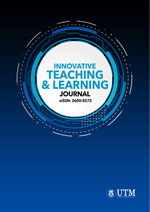Measuring The Efficacy of Combining Online and Offline Teaching Methods: A Case Study of University Students in China
Abstract
The global spread of COVID-19 means students are unable to resume their normal classes. This has led to adoption of online teaching methods. This paper examines how offline learning and online learning methods can be combined to achieve better learning outcomes. The acronym ‘OMO’ has become fashionable nowadays referring to merging of offline and online learning methods, the latter being internet or app based. A mixture of both methods is expected to produce a good study outcome. In testing this hypothesis, the paper examined a sample of 100 students from Hebei Finance University in city of Baoding. It also examined the advantages and disadvantages of the OMO methods post pandemic. Both quantitative and qualitative methods were used in this research, and the challenges of online and offline teaching methods are discussed before putting forward suggestions for future development of OMO learning methods.
















